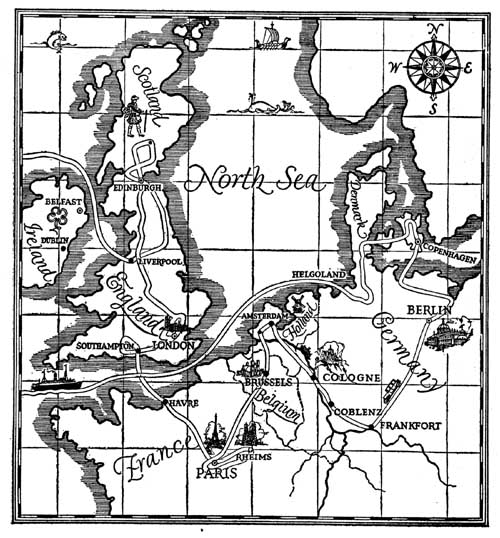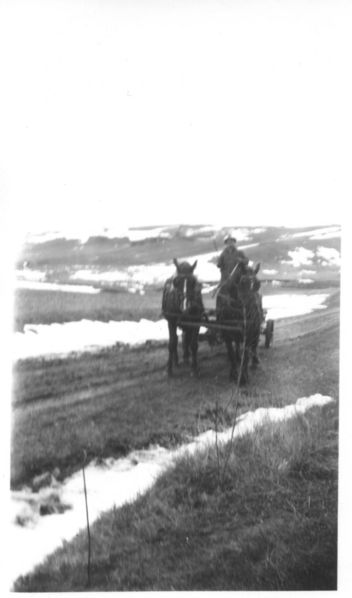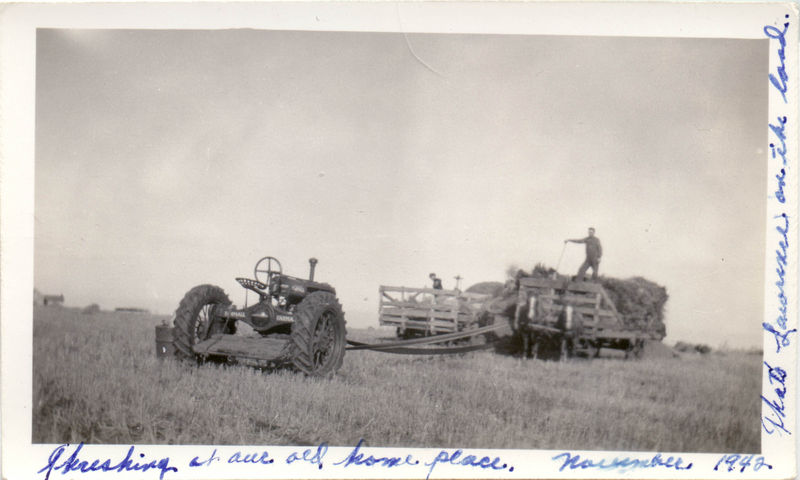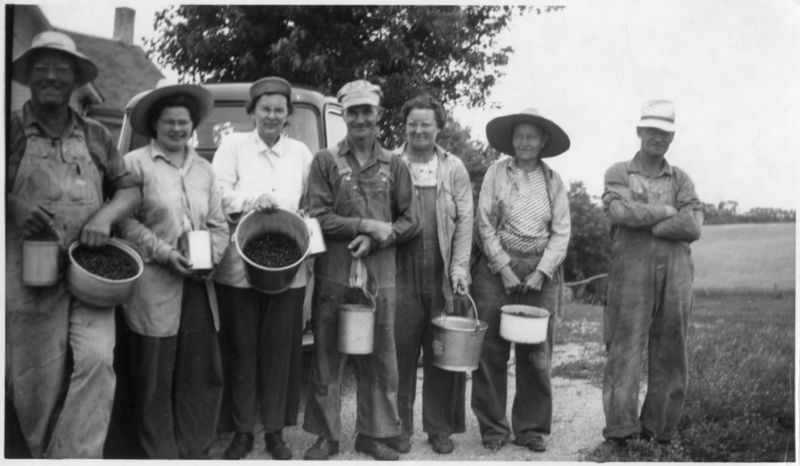John Deere 820, 1960s

The John Deere 820 was, by some accounts, manufactured in the late 1950s, although some for sale say they were made in the 1970s. Known for its large-displacement 2-cylinder motor with excellent gear ratio, the 820 has been popular in tractor-pull events due to its inability to stall. This photo was the tail-end of a roll of slide film, and the film wasn't large enough to fit into a standard slide frame. The owner made due by tracing a slide frame onto cardboard, cutting it out, and taping the film into it.
Labels: 1960s, 820, farming, john deere, tractor
Farm Insurance, 1895.
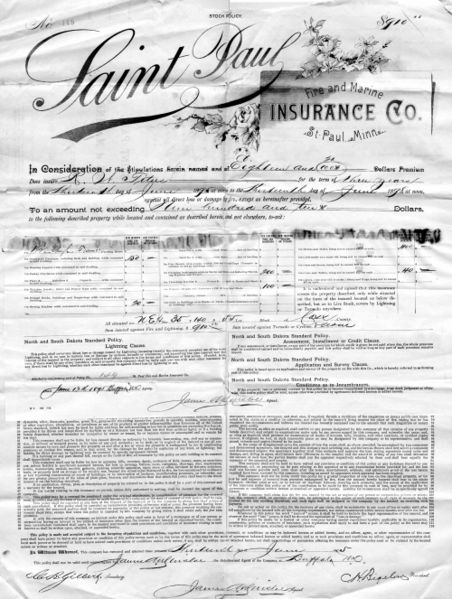
A hundred and thirteen years ago, R.U. Titus stood in his farmyard and looked upwards, wondering what sort of terror might plunge out of it -- lightning, tornadoes -- and decided he should buy some insurance on him home, horses, and farm equipment. Today, whoever still lives at the farmstead on the NorthEast quarter of Township 140, Range 55, Section 35 looks up and wonders just how much resolution those terrain sattelites can get:
View Larger Map
Farmall F-20 Threshing, 1942.
A-C WD and Swather, 1961
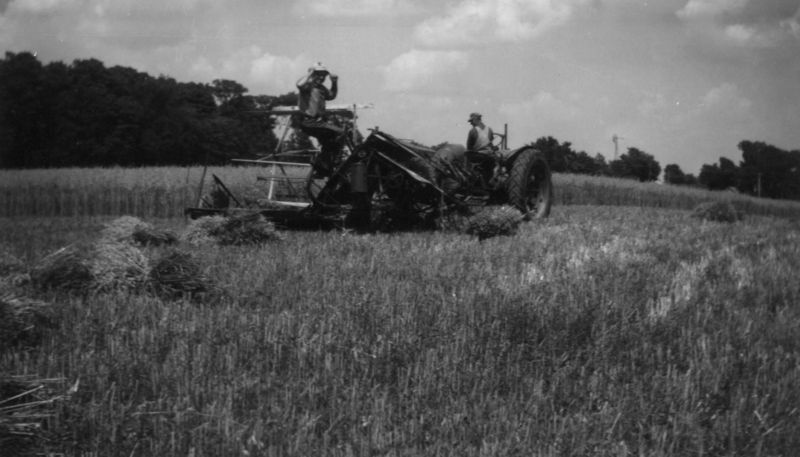
An Allis-Chalmers WD pulling a swather; dated by lab "Aug 1961".
Labels: 1960s, 1961, allis-chalmers, farming, swather
Bob, Flipo, and Elmer
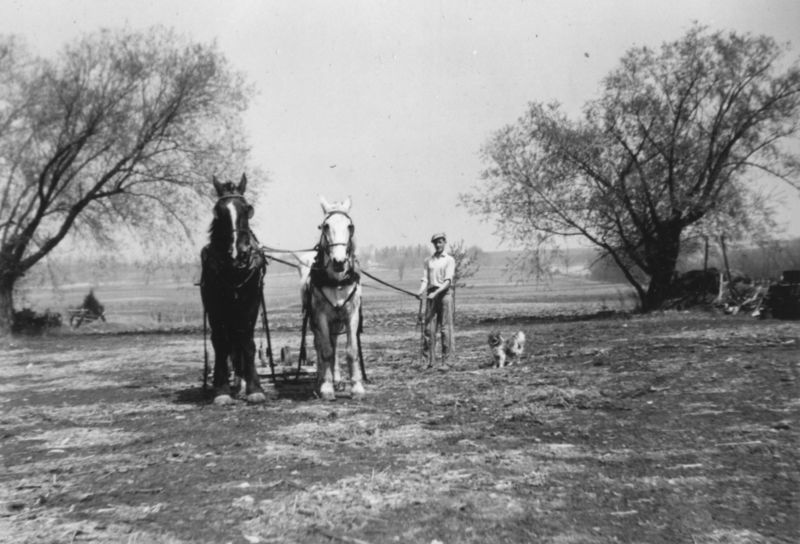 This photo was titled, "Bob, Flipo, and Elmer." However, we've got four entities in the photo: Two horses, a man, and a dog. So, who's who? Elsewhere in the album, we've met an "Elm", which is probably short for Elmer, and a Brownie, that looks a bit like this dog. So, that means the horses are named "Bob" and "Flipo." What are Bob and Flipo doing? It looks like they're hitched to a drag of some sort, scraping the surface of the ground to turn the turf under and either prepare it for planting, or just turn the weeds under so they don't become too unmanageable.
This photo was titled, "Bob, Flipo, and Elmer." However, we've got four entities in the photo: Two horses, a man, and a dog. So, who's who? Elsewhere in the album, we've met an "Elm", which is probably short for Elmer, and a Brownie, that looks a bit like this dog. So, that means the horses are named "Bob" and "Flipo." What are Bob and Flipo doing? It looks like they're hitched to a drag of some sort, scraping the surface of the ground to turn the turf under and either prepare it for planting, or just turn the weeds under so they don't become too unmanageable.Labels: 1930s, 1938, farming, horse names, wisconsin history
Laziness and the P.W.A.
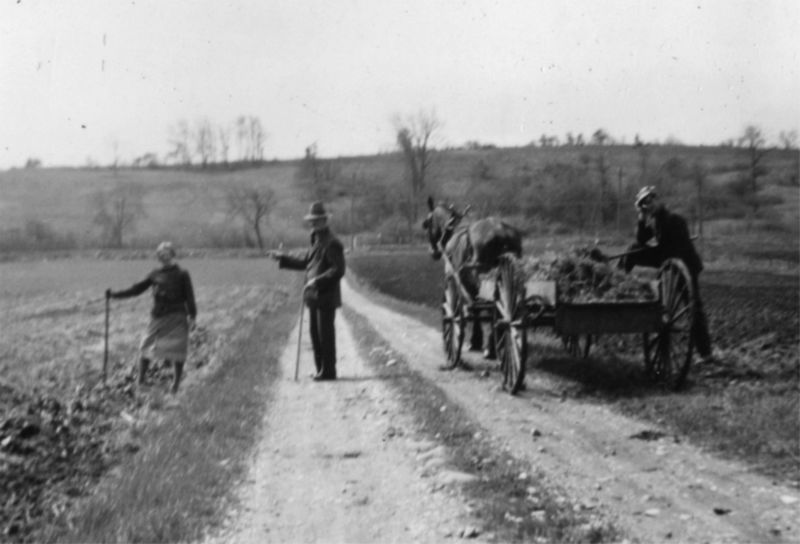
In 1933, the US government starting putting a large amount of money into public works, helping the economy, building communities, and keeping people working. The PWA, or Public Works Administration, did a lot of high-profile work, but the PWA helped communities and projects of all sizes. This picture was captioned "P.W.A. Workers" -- however, they look hardly like a PWA project. The owner of the photo album had a sense of humor; the PWA (and its relative, the WPA) had a somewhat undeserved reputation for laziness. Ms. Photographer, it seems, saw a woman in the field -- and the guys not working -- as representative of the PWA, whether or not their paychecks came from the New Deal or not.
see also: the pwa *pwa thoughts * *pwa and nat'l parks * the wpa * wpa murals * wpa in georgia * wpa posters
Labels: 1930s, 1938, farm life, farming, public works administration, pwa, wisconsin history, wpa
Minnesota Kaiser - 1947
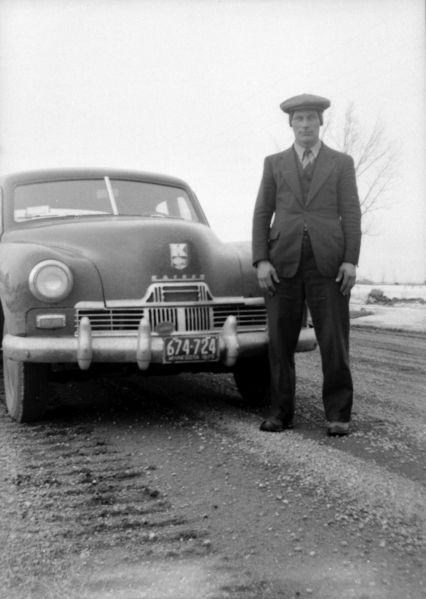 My great-uncle (not the guy in the picture) had a Kaiser Frazer -- he owned it until he needed to clear out his farmstead, at which time the Frazer moved out to my uncle's farm, where it has sat for almost twenty years now, progressively and slowly turning into a pile of rusty dust. Kaiser wasn't a big manufacturer, and there weren't a lot around, so I was rather surprised to turn up a whole bunch of pictures of another Kaiser taken within twenty miles of where my great-uncle lived. How'd that happen?
My great-uncle (not the guy in the picture) had a Kaiser Frazer -- he owned it until he needed to clear out his farmstead, at which time the Frazer moved out to my uncle's farm, where it has sat for almost twenty years now, progressively and slowly turning into a pile of rusty dust. Kaiser wasn't a big manufacturer, and there weren't a lot around, so I was rather surprised to turn up a whole bunch of pictures of another Kaiser taken within twenty miles of where my great-uncle lived. How'd that happen?Grandpa Vernon, as always, had the answer: there was a Kaiser dealer out that way, so there was ample opportunity for local farmers to buy 'em. In the post-war booming, accompanied by REA, improved roads and transportation, and new farming techniques, farmers did pretty good for themselves, plenty enough to warrant spending a bit on a nice new car.
So, as you might have noticed, I've been scanning and uploading more of my Early 20th Century Minnesota Farmland series -- if I were more organized, I could point out the new ones better, but, sadly, there's just so many of them. New images are primarily the last 1/4 of the Black Album, and all of the Red Album.
Labels: antique photo, farming, frazer, kaiser, minnesota, photos











